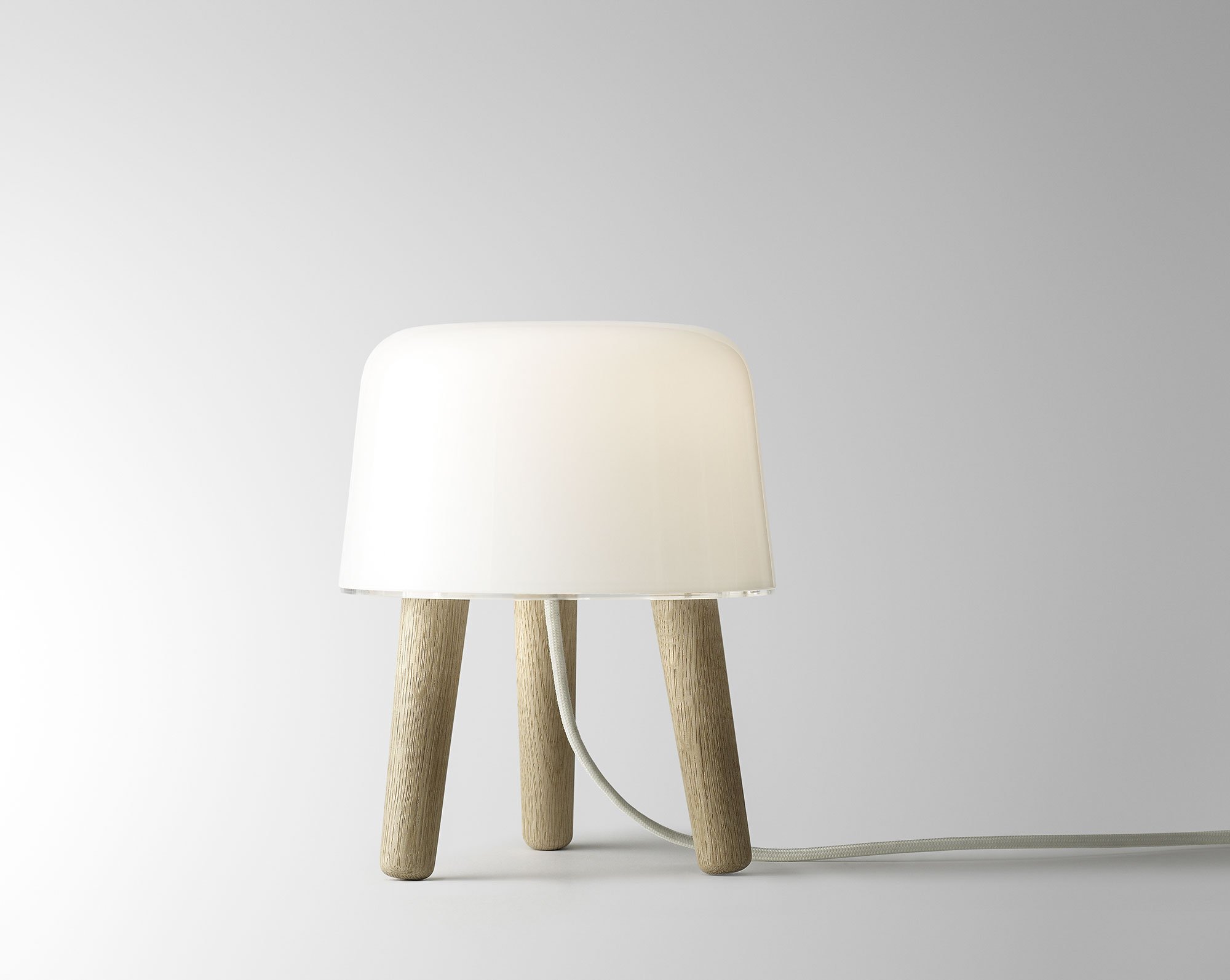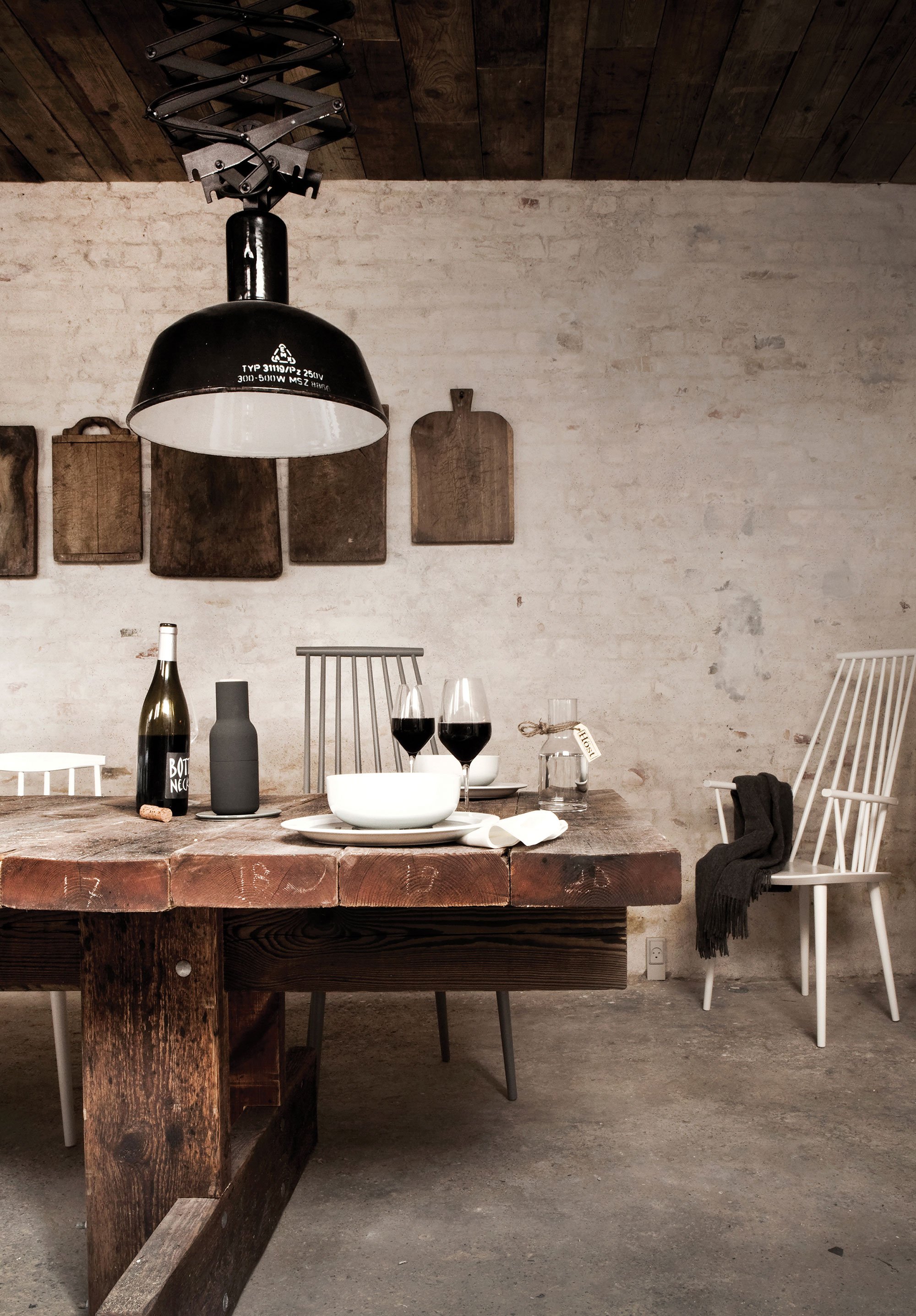A one-time novice in the Nordic design genre, it was on discovering Norm Architects (a Copenhagen-based multidisciplinary design studio founded in 2008) that I began to truly appreciate and understand the nuances of Nordic design. Norm Architects represented a human approach to design, their work underpinned by a resolute belief in well-being, balance, integrity and quality. Interiors and objects were imbued with a sense of calm and meaning, devoid of any pretence. They were tactile and aesthetic, understandable and unobtrusive. Norm Architects distilled the quintessence of Nordic design, and especially Danish design, into a way of working that accentuates happiness, thoughtfulness and emotion. Today, Norm Architects has evolved—growing both its team and its offer—while remaining true to its core values.
Jonas Bjerre-Poulsen created Norm Architects together with Kasper Rønn. An architect, designer, art director and photographer, Jonas has an insatiable appetite for creativity. His passion is evidenced by his eye for detail, his thoughtful approach and his determination to make a difference, through experiential design that is understated and made to last.
Gessato gets behind the design with Jonas Bjerre-Poulsen.
What are five words that best describe you?
This one is hard to start out with—it’s always tough to evaluate yourself. But here are ‘six’ words: curious, determined, aesthete, critical, sensible, pragmatic.
I am always struck by the aesthetic nature of Norm’s various designs and their elegant, minimal quality. How do you approach design—what is your creative process?
At Norm, the design process is all about refinement, balance and reduction. It is about distilling a design to its purist form, as the quintessence of perfection, whether it’s photography, graphics, architecture or product design. I believe that eliminating the irrelevant means emphasising the important. All too often, people think of architecture and design in terms of an added wow factor. However, it’s usually the simple and unadorned designs that are the most striking.
In Norm’s work, we aim for geometrical purity: something simple, natural and authentic, evoking a spatial sense of serenity. We want to arrive at the maximum level of expressivity, but with the minimum of expression. In an era where people are continuously bombarded with an avalanche of images, shapes and sounds, capturing the essence of something is the most eloquent form of expression. It is not about designing less of a product or creating a room bereft of emotion. Rather it’s about soft, simple shapes that invite you to engage with them; it’s about spaces that welcome you and products that not only fulfil a function, but also fill you with joy and well-being. In our obsessive attention to detail, we strive to balance the visual, the tactile and the sensual, in order to create the unusual.

In life, what are you curious about?
I am curious about many things: history, psychology, philosophy, art, biology, science. And of course everything that evolves from what I love and do: architecture, design and art direction. I find inspiration for my work everywhere and all of the time. For example, I get new ideas when I go for a walk on the beach or in the woods: it can be the shape of a stone or the structure of the bark of a tree. But it can also be the color of a wall in the city or the light in a passage. My ideas are also born out of conversations: when I hear about people’s needs or challenges, I cannot help thinking of solutions to their problems.
Inspiration also comes from my studies of the work of other architects and designers. The list of my design heroes is infinitely long. Within architecture, I have always been drawn to the work of Italian architect Carlo Scarpa (1906–1978), who fascinates me with his projects. They are exceptionally harmonized, while remaining very imaginative and decorative. It’s amazing how you can create something that appears calm with such richness of detailing. The American artist Donald Judd (1928–1994) is an important inspiration to me. I think his works are exactly at the point where there is nothing you can add or subtract to make them any better. Right now, I am obsessed with the work of Austrian–American graphic designer Herbert Bayer (1900–1985). His graphic work for the Bauhaus is a continuous inspiration and crossed many genres: graphics, art, architecture, photography and design. It has inspired me to do the same.
In a global system, we see increasing uniformity in and commodification of design. How do we combat a tyranny of sameness and encourage an approach—by designers, manufacturers and consumers—that embraces authenticity, creativity, difference and integrity in design?
I don’t think uniformity is necessarily a bad thing. I don’t believe in design revolutions. I think of design as an evolutionary process, where creativity is about combining existing things in new ways and gradually improving them. The program for a chair is one that fulfils a basic everyday need for our body—the ability to sit in an elevated position—and it hasn’t changed for the past five thousand years. Nevertheless, it is still necessary for us to make chairs: they are authentic, creative designs; they are full of integrity without being all that different or new.
As people spend more and more time in front of a screen, the exchange of ideas globally is much easier than ever before—social media is a prime example. To a large extent this is great, but it also means we’re exposed to the same inspirational images, and of course this leads to similarities in output. As head of design for Menu, I sometimes receive five design proposals in one day that are very similar. I can almost always track them back to an article published on some online architecture and design magazine.

You have a passion for phenomenology, described as ‘the philosophical study of human experience’. Phenomenology embraces the development of human consciousness and self-awareness—how is this manifested in your approach to design?
Instead of talking about architecture or design in technical terms, I like to think about spaces or objects as they appear in experiences. Design and architecture are not only about appearance, size and color. They’re about how things smell, how they feel and what emotions they evoke. For example, when we designed the Höst restaurant in Copenhagen, every design choice was about creating the sensation of being outdoors in a rural farmyard, even though we were designing a cool urban restaurant in the centre of the city. The design process was more about staging an emotional experience than simply designing something functional or beautiful. In the same manner, when we design objects we often work with anthropomorphic shapes and natural materials. I believe these are intrinsic values that speak subconsciously to people across the world, regardless of culture.
You have a wealth of experience as an architect, designer, art director and photographer. Nowadays, do you think designers require a diverse design toolkit in order to compete and succeed?
No, I don’t think this is a requirement at all. I know many of my colleagues who are entirely obsessed with design, architecture or photography, and still have great careers. Historically, these creative disciplines have been separated, but worked well together. However, it seems that today the boundaries are blurred—partly because of the accessibility of technology. This is also reflected in the technical competence of designers, architects and photographers. When I was at architecture school, at no time did we learn anything about how to technically build something. As a photographer, I don’t know much about shutter speed or ISO. But I love new challenges and there is certainly an advantage in the ability to create products along with the ability to produce the way in which we communicate them. There is less danger of important elements getting lost in translation.
I often find myself perusing Norm’s website and I’m captivated by the visual perception of every image. How important is imagery in your work?
I will use my camera to understand the physical world. When photographing a place, it’s all about distilling and simplifying what you see. I love photography and I love editing images. It’s like meditation for me; when working with images, I’m completely lost in time and space. What’s more, producing the images is very much about understanding what we did with a project at a more intuitive level and breaking it down into parts.
What, in your opinion, lies behind the phenomenal, worldwide success of modern Nordic design?
Standing with both feet planted in the middle of contemporary Nordic design, it might be hard for me to fully see it from an outside perspective. I see Nordic design as more detailed than just one coherent design movement. Denmark and Finland had some golden mid-century years, with their soft and natural version of central European Modernism found in architecture and design. In those years, Sweden had a few architects and glass designers who were much more traditional in their approach. And in Norway, there weren’t any noteworthy mid-century designs produced.
Today, there are many talented designers working in each of the Nordic countries, and not just for Nordic companies: these designers work for American, Italian, Spanish, Chinese and Japanese companies. Moreover, we have Nordic design companies with amazing global success, working not only with Nordic designers but with designers of different nationalities, each with a kindred spirit.
I think the success of Nordic design—however the genre is defined—can be found in the design traditions of our public spaces and our business culture. People are exposed to great design from early childhood: from hospitals to primary schools and from bus stops to lamp posts etc.
Norm Architects will celebrate its tenth birthday in 2018. Looking back over the past decade, what are you especially proud of?
We continually strive to make simple, good and timeless projects. One of the things I have repeated at the studio, over and over again, is that I always want to be proud of the projects I completed ten years ago—I don’t want to look back and find them outdated because we followed fashions. Of course not all of our projects live up to this, but I am very proud of many of them today. I can’t single them out—it would be like choosing which one of your children you like the best.*
When are you most happy and content?
When I’m doing something intuitively and without conscious thought. It could be a day at the studio with no meetings, just sketching ideas. I could be working with images that I shot the day before. It could be a weekend trip with the family, or playing tennis or soccer.
*(The Milk Lamp—pictured above—is one of this writer’s favourite Norm designs.)


